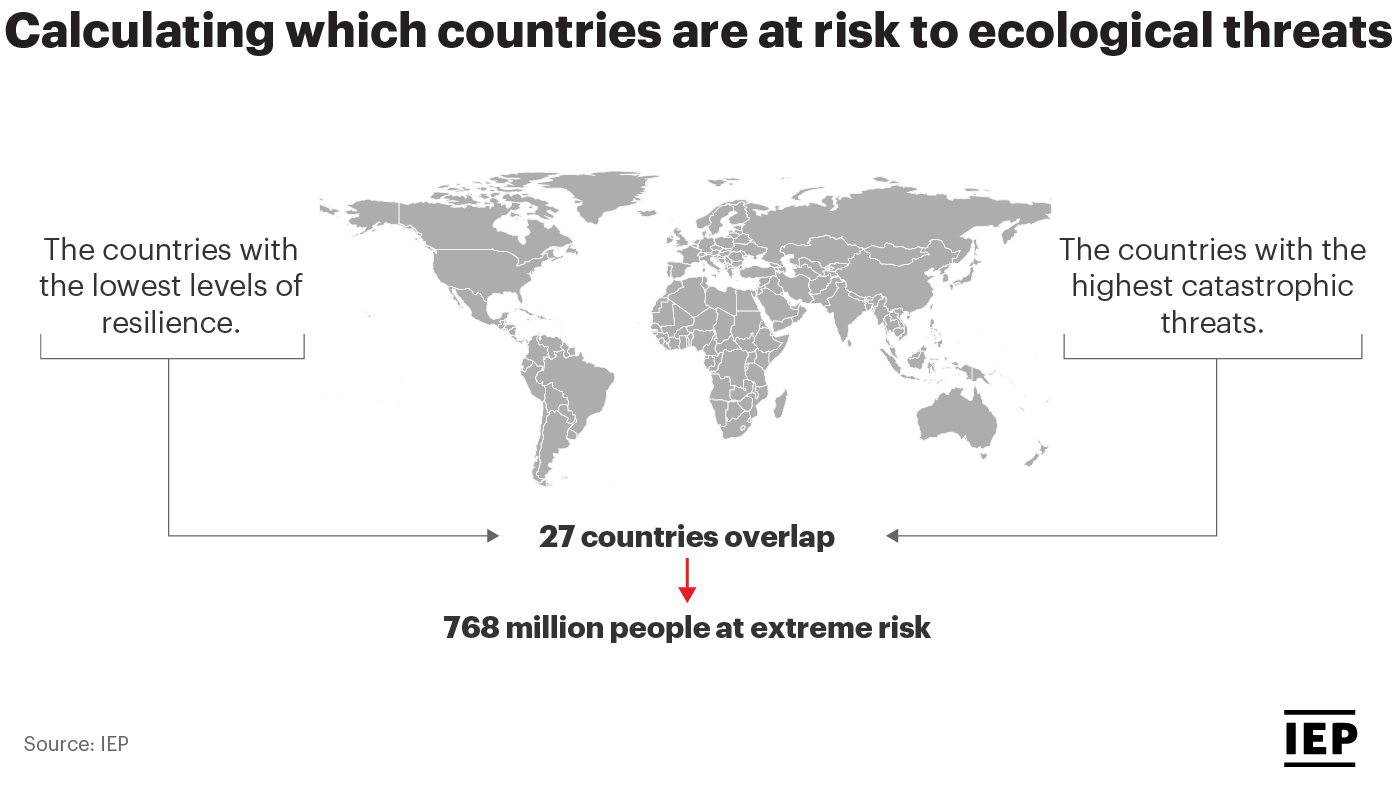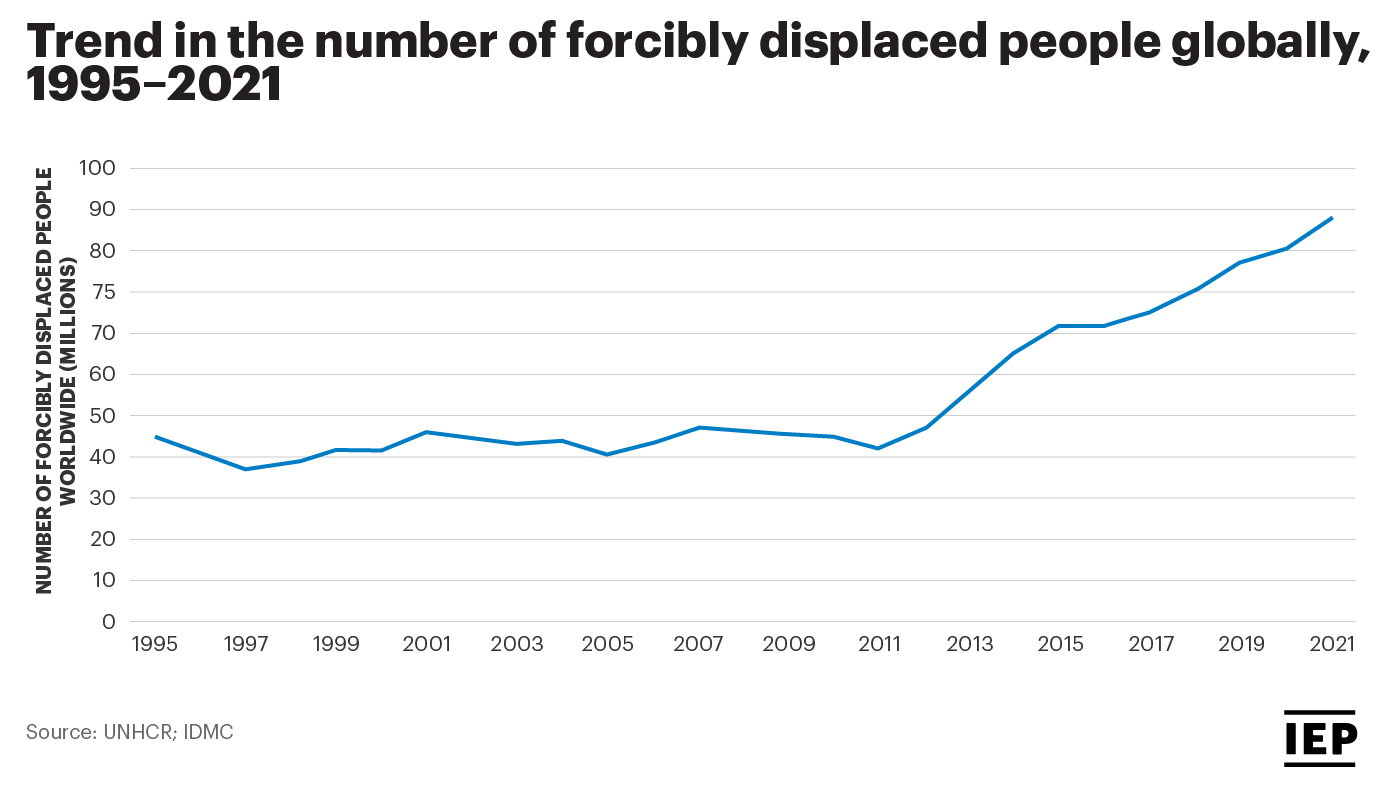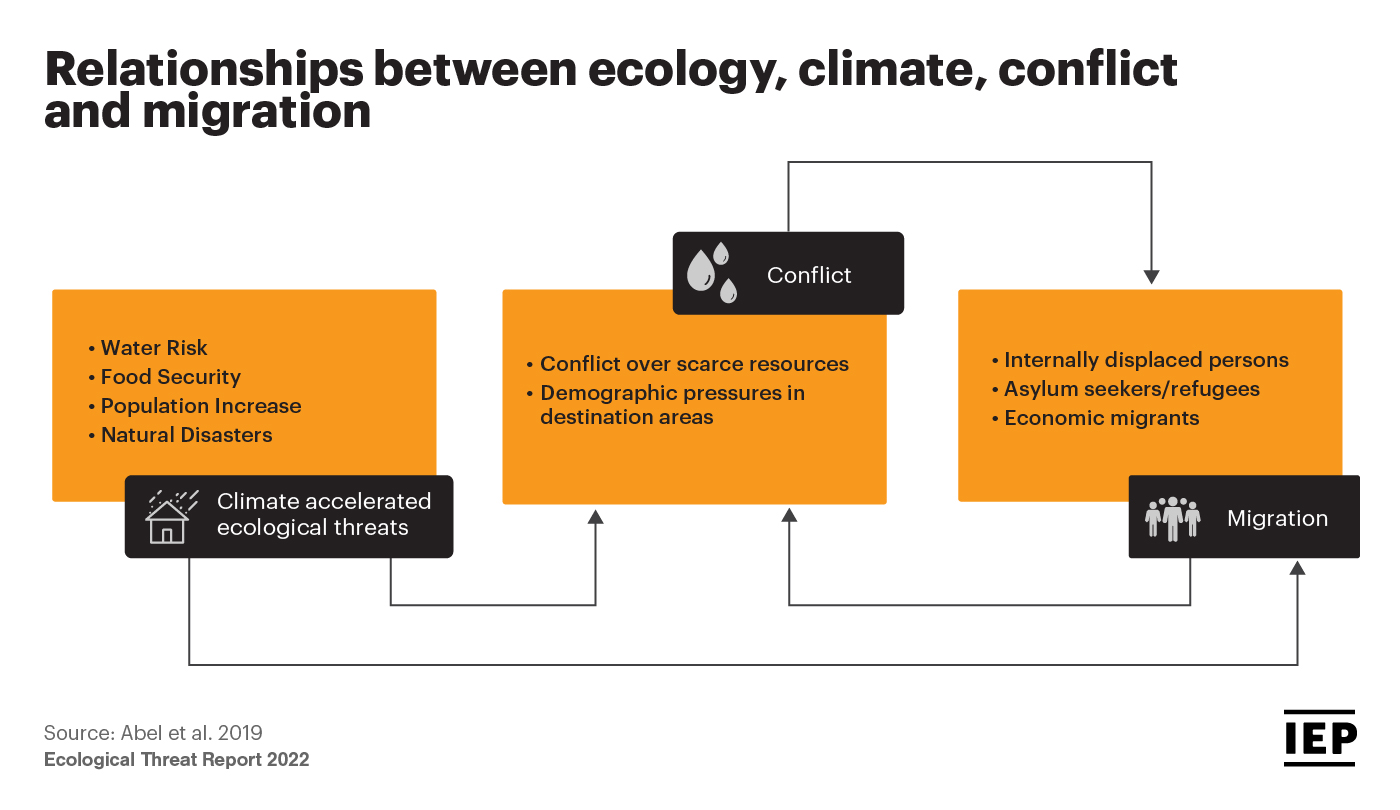A recent Intergovernmental Panel on Climate Change (IPCC) report estimates with confidence that there will be a further 1.5 degrees Celsius increase in Earth’s surface temperature between 2030 and 2052. This has the potential for alarming climate risks including rising land and sea temperatures, extreme rainfall and temperature fluctuations, and continued rising sea levels.

The impact of fluctuating climate conditions on societal stability, and its potential to lead to violent conflict, is of growing importance.
Although long-term quantitative data on the interactions of climate and peace is scarce, the available data suggests climate has played a role in triggering or exacerbating conflict through its effects on livelihood, security and resource availability.
IEP estimates that 768 million people are living in 27 hotspot countries where societal resilience is not sufficient to withstand the impact of the threats they are facing. This lack of resilience can be due to existing issues such as food insecurity, water insecurity or an inability to manage natural disasters.

For more insights on the 27 hotspot countries, read the 2022 Ecological Threat Report
In IEP’s Global Peace Index this year, 71 countries had deteriorated in peacefulness; with a significant proportion of these countries having a high or very high risk of climate risks such as a tsunami, floods, tropical cyclones or droughts. This is the 11th time in the last 14 years that global peace has deteriorated, and is occurring at the same time as climate-related risks have been intensifying.
In 2021, there were 89.3 million forcibly displaced people. This figure includes internally displaced people, as well as refugees. There is a growing recognition of the links between climate change and displacement, with a significant proportion of displacement occurring as a direct or indirect result of climate change.
As climate-related disasters increase in intensity and frequency, displacements continue to rise. According to projections, over 143 million people are likely to be internally displaced by 2050 as a result of increasing ecological threats and climate change. The areas that are hit hardest tend to be those with the least capacity to cope, and this often exacerbates underlying social and economic issues.

The summer of 2022 was a record-breaking season, across Europe in particular. Temperatures in Spain, Portugal and the UK hit 40 degrees and a number of prolonged heat waves served as the catalysts for severe droughts that impacted much of the continent. This occurred less than a year after a series of devastating floods that affected a number of European countries.
Analysis from Carbon Brief suggests that 142 out of 152 extreme heat events were made more likely or more severe because of climate change. This equates to 93% of all events of this type, and highlights the intrinsic relationship between climate change and extreme weather events.
The climate-security nexus describes the link between climate change, ecological threats, security and migration. Increased ecological threats from a changing climate can often have significant security implications.
The conflict in Syria, for example, was preceded by a mega-drought that increased rural-to-urban migration and placed enormous strain on already stretched services and infrastructure. Sub-Saharan Africa, Latin America and South Asia will be the most impacted areas, as agricultural conditions and water availability deteriorate. By 2050 tens of millions of people will be displaced in these regions alone.
There is a strong relationship between extreme weather events and displacement. In Ethiopia, droughts in the mid-1970s and 1980s as well as subsequent famines led to waves of migration from drought-stressed areas (both voluntary and government forced). In this case, both climate change and political factors impacted displacement and international migration. As a result of this instability, violence and insecurity increased in neighbouring countries, which only further impacted Ethiopia.

Empirical evidence suggests that it is those with the lowest resilience are likely to face the greatest challenges and are most likely to migrate. This migration has a huge impact on recipient countries and communities and can increase pressures on existing infrastructure, creating grievances within the local population and increasing the risk of conflict.
These complex challenges present a significant obstacle to peace. Finding adequate solutions is likely to be equally challenging. However, with the growing scale and intensity of climate risks, these challenges are not going anywhere and addressing these issues will be critical.